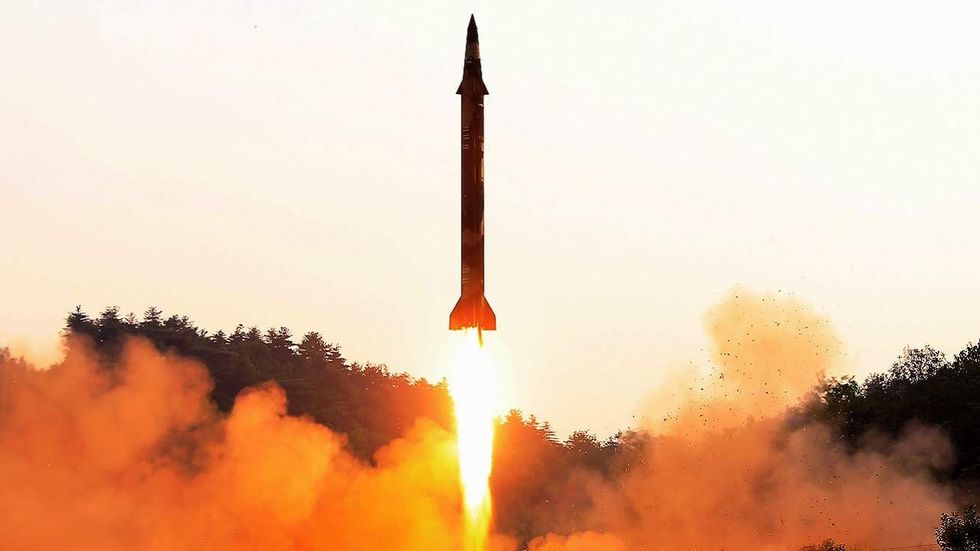
STR/AFP/Getty Images

President Trump’s greatest success has been his effectiveness in reversing the policies of the Obama era. Mr. Trump refuses to accept the status quo and despite the protestations of the political establishment of both parties, he is rolling back the Obama-tide of red-tape, job killing regulations, and the dangerous bureaucratic fiats that have killed jobs and damaged the United States. However, one area that the president has yet to change course on is missile defense programs.
Although the threat of a nuclear Soviet Union is behind us, other threats like the Hermit Kingdom of North Korea or the mullahs of Iran still exist. The apparent willingness of North Korea’s dictator to flout international norms and threaten nuclear war against the United States did little to change President Obama’s long-time opposition to a national missile defense system. In addition to billions in proposed spending cuts, Mr. Obama dispatched much of our arsenal to the European continent while American taxpayers paid the costs.
First, the good news. Despite eight years of neglect and negligence, the vision of a defensive shield designed to protect the United States from nuclear missile attack, first annunciated by President Ronald Reagan, continues to advance. Thanks to the technological advances, Hawaii and western states are well-protected from rogue regimes. In late May, The U.S. Missile Defense Agency successfully shot down a dummy warhead in space over the Pacific Ocean during a test of a missile defense system that would protect the country from intercontinental ballistic missiles like the ones being developed by North Korea. The successful test was described as an “incredible accomplishment for the Ground Midcourse Defense (GDM) system” and a “critical milestone for the program.”
Residents of Honolulu and other Hawaiian Islands can rest easier knowing that they are adequately protected from ICBMs because of the Ground-Based Midcourse Defense System, which includes 36 interceptors in California and Alaska and a network of sensors on land, sea, and even outer space.
But if we want to avoid war, then we need to protect more than the westernmost states. President Trump has a historic opportunity to expand and make critical changes to the program, essentially reversing course on the Obama-years, just as he has done on everything else from the Paris Accords to the TPP trade deal. Instead of protecting Europe, more focus should be on protecting “America First.”
The White House must make a critical change to a poor procurement decision made by the last director of the program in his way out the door. Vice-Admiral Jim Syring, on his final day, approved a procurement scheme that will complicate deployment of missile defense. Known as “disaggregation,” the plan essentially “in-sources” development of the program inside the government.
Under this system, rather than purchasing programs off-the-shelf, the Air Force would buy components from different firms and try to piece the system together. That would be like buying a Chevy body, an engine from Ford, and a transmission from Dodge and then asking the government to put the car together to get it to work. This is a mandate for delay and waste.
Congress and the president must ensure that missile defense is a top priority for our military, and that starts with a change in direction from the eight years of benign neglect of the Obama-years.
Peter Weyrich is a longtime conservative activist who has worked for a variety of pro-free market organizations including the Free Congress Foundation and Coalitions for America.